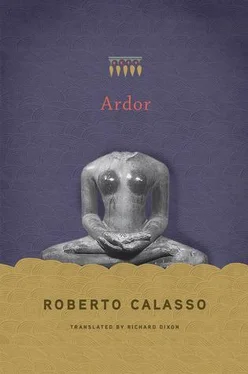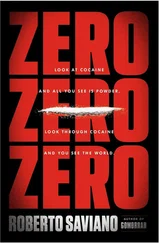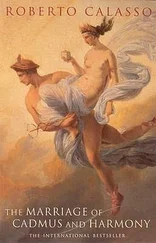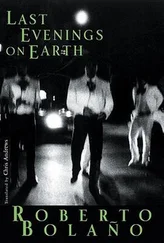Only in this way can sacrifice be understood: not just a way of covering up guilt, a pia fraus that enables the world to continue thanks to priestly stratagem. But a daring speculation that above all exalts guilt. It exalts it to the point of persuading the victim to become favorably disposed to being immolated. This, obviously, is not what happens. No one imagines that the goat or the horse let themselves be persuaded to be killed and butchered. None of the ritualists could have believed that. But to carry out a gesture in that direction, to express words with that intention: this is the supreme effort granted to thought, granted to action, where we come face to face with the irreconcilable. An illusory, transitory attempt. And yet that conscious illusion is the only force that makes it possible to establish a distance, albeit minimal, from the plain act of killing.
Nowhere else in antiquity (later the question would no longer be raised, since man was so convinced of his moral superiority) did anyone ever dare to suggest that animals originally walked upright and became four-legged only because they were terrified of something: of a solitary octagonal post, crowned with a bundle of grass to cover its bareness. The discovery of the post was not attributed to man, but to the gods, as if the post were indeed the axis mundi —and as if life were inconceivable without it. And yet the post is not enough: it forces animals to walk on four legs, in terror, but it does not persuade them to allow themselves to be slaughtered. The gods now had to propose a theological nicety: they explained to the animals that the sacrifice was an offer of “fire in fire.” Mysterious words: but the whole of the Śatapatha Brāhmaṇa , and in particular the sections on the fire altar, is devoted to describing it. That “thunderbolt” which is the sacrificial post was therefore not enough. The terror was overcome, but the animals still did not yield. Theory, lofty liturgical speculation, then took over. Only then did the animals give in. Or at least it was said that the animals gave in.
* * *
The terror is not only in the animals. It is in man. As soon as he saw the appearance of the “post,” the yūpa , man understood that he would have to kill those creatures who, until a moment before, were walking with him and by his side. He would have to take hold of the rope that is invariably tied to the post. It is a moment of paralysis. The liturgy then says: “Be bold, O man!” The man then continues, tries to be brave. Once again, he clings to theology: the knot his hands are already inadvertently preparing is none other than “the noose of world order.” As for the rope, it is “Varuṇa’s rope.” It is as if the gods themselves were acting. And with this the guilt is offloaded onto the gods. At the critical moment — the moment when the officiant ties the animal to the post — every part of his body is taken over by a god, limb for limb. Even the impulse that makes him act is attributed to Savitṛ, who is the Impeller. So he says: “At the impulse of the divine Savitṛ, I tie you with the arms of the Aśvins, with the hands of Pūṣan, you who are liked by Agni and Soma.” The one who acts is like a sleepwalker. How can he be guilty?
But nothing — not even the gods — is ever sufficient to offload the guilt. So a few moments later, the sacrificer will feel the need to ask the victim’s mother and father for permission to kill: “And may your mother consent, and your father…” But not even this is enough. Then the sacrificer adds: “And your brother, your companion in the herd.” And by this he means: “Any creature related to you by blood, with their consent I kill you.” Nothing less than unanimity is required when it comes to killing.
* * *
According to the Śatapatha Brāhmaṇa , it was not true that human beings, over the course of millennia, achieved the upright position, freeing themselves from their life as four-legged primates. On the contrary: humans were the only ones to have remained standing upright, while all the other animals became crooked and had to learn to walk on four legs. What decided their fate? Sacrifice, then killing. Animals cannot remain upright for fear of being killed : they have seen the post, they know they are destined to be tied to it, they know they will then be killed. Humans remain standing because they know they are the sacrificers. This is the dividing line that guides the course of human history.
At this point a chorus of voices will say that the Darwinian view has supplanted the thinking of the Śatapatha Brāhmaṇa once and for all, as if the latter were a childish and disturbing prelude to the discovery of what really happened. But would it not be an irreparable loss for us to eliminate the Vedic vision? Does it not offer something to human knowledge that would otherwise remain unspoken and ignored? This is where the shared bond between man and the animal world finds its unshakable foundation, which goes well beyond any feeling of empathy. It is no longer man who is emancipated from his animal companions. But it is the animals who are seen as fallen beings, having had to submit to the condition of victim. An enlightened humanity could accept both Darwin’s vision and that of the Brāhmaṇas at one and the same time, with an impartial farsightedness — an improbable humanity.
* * *
“He then puts on a garment, for completeness: in fact in this way he puts on his own skin. That same skin that belongs to the cow was originally on man.
“The gods said: ‘The cow endures everything down here; come, let us put that skin onto the cow which is now on man: in that way it will be able to endure rain and cold and heat.’
“Having flayed the man, they therefore put his skin onto the cow, so that it could now endure the rain and the cold and the heat.
“In this way the man was flayed; so when even a blade of grass or something else cuts him, blood gushes forth. They then put that skin, the robe, on him; and for this reason man alone wears a robe, because it was put onto him like a skin. Care must therefore be taken in dressing well, so that one’s skin is completely covered. This is why people love seeing even an ugly person dressed well, since he is clothed with his own skin.
“He shall therefore not appear naked before a cow. Because the cow knows it is wearing his skin and runs away for fear that he wants to take it back from it. Even cows are therefore trusting when they approach those who are well dressed.”
If we want an example of an unfathomable story in the Brāhmaṇas, then this could be it. Only Kafka, in his stories about animals and men, reached a similar pitch. Here the basis of history is the whole of prehistory: man’s long dark period of laborious differentiation from other beings, which culminated in all these creatures being successfully grouped together under a single word: animals. In that period we see man’s astonishing, gradual transformation from prey to predator. The discovery of the meat diet: the primordial guilt and overwhelming stimulus for the development and spread of power. A story too distant and too secret to have left any verbal trace. But a story that has embedded itself in the least accessible level of human sensibility.
Man feels an irredeemable guilt toward the cow, as well as toward the antelope — an animal that cannot be sacrificed (because it is wild) though it will become the heraldic animal of sacrifice. It is true that “the cow supports everything down here,” but in return man flays it. To feed himself, man kills a being that up until then is feeding him. So extreme is the guilt that, to speak of it, he will have to invent a story that turns the situation upside down. Man will then find a justification: in his trepidation, in his uncertainty, in remembrance of his defenselessness.
Читать дальше












